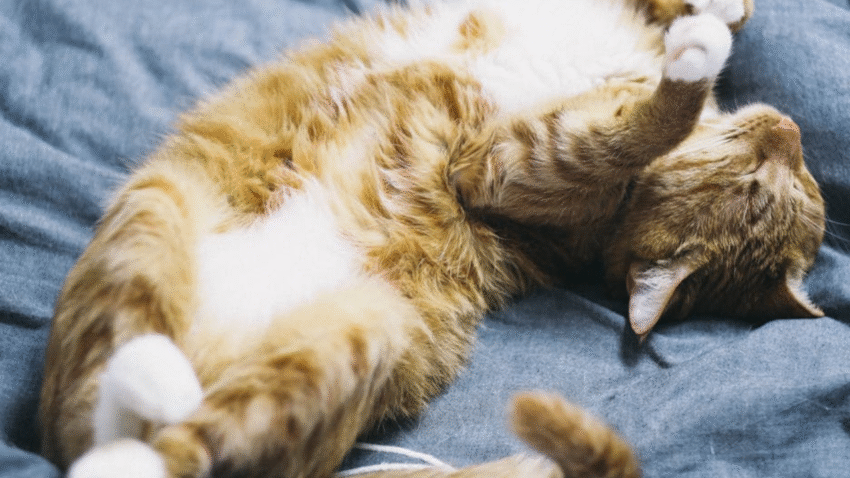Introduction
Is grooming becoming a challenge for your aging feline? Senior cats with mobility issues often struggle to clean themselves properly, leading to matted fur, dirty ears, and even skin infections. In this guide, you’ll learn how to groom a senior cat with mobility issues using gentle techniques and the right tools. Whether your cat has arthritis, joint pain, or general stiffness, this step-by-step guide will help keep them clean, comfortable, and happy.
Why Grooming Matters for Senior Cats with Mobility Issues
As cats age, conditions like arthritis, hip dysplasia, or neurological decline can limit their ability to reach all parts of their body. They may no longer be able to groom their back, tail, or belly — areas that are prone to matting, odor, or dirt buildup.
Proper grooming is essential for:
- Maintaining skin and coat health
- Preventing matting and painful tangles
- Reducing the risk of infection
- Improving comfort and mobility
- Strengthening the bond between you and your cat
Senior cats often enjoy gentle grooming when it’s done patiently. With the right approach, you can improve their quality of life significantly.
Step-by-Step Guide to Grooming a Senior Cat with Limited Mobility
1. Choose the Right Location and Time
Pick a quiet, comfortable space where your cat feels safe — like a soft towel on a low table or your lap on the couch. Schedule grooming after meals or naps when your cat is most relaxed.
- Avoid loud or busy environments
- Dim the lights if needed
- Have everything you need within reach
2. Gather Senior-Friendly Grooming Tools
Use tools designed for sensitive skin and gentle handling:
- Soft-bristle brush or grooming mitt
- Wide-tooth comb for detangling
- Cat-safe grooming wipes
- Nail clippers with a safety guard
- Styptic powder (in case of minor bleeding)
- Towel or non-slip mat
- Optional: pet-safe dry shampoo for spot cleaning
3. Begin with Gentle Petting and Reassurance
Start by calmly petting your cat and speaking softly. Let them sniff the tools and reward calm behavior with soothing praise or a treat.
- Respect their boundaries
- Watch for signs of pain or stress (growling, stiffening, pulling away)
4. Brush the Coat in Sections
Gently work through the fur in small areas. Focus on spots they can’t reach:
- Back and hips
- Base of tail
- Chest and belly (only if your cat tolerates it)
Tips:
- Use slow, downward strokes with the grain of the fur
- Start with a soft brush, then a comb if needed
- Stop if your cat becomes agitated
If you find mats, hold the fur close to the skin and gently detangle with a wide-tooth comb. Never yank or cut mats without training — this can injure your cat.
5. Clean Ears and Eyes
Use cat-safe wipes or a damp cotton ball to clean:
- Ears – Wipe gently around the outer ear (never insert anything inside)
- Eyes – Remove tear stains or debris near the corners
Do this weekly, or as recommended by your vet, especially if your cat is prone to infections.
6. Trim Nails Safely
Senior cats may not wear down their nails naturally. Overgrown nails can curl into their paw pads, causing pain or infection.
Steps:
- Wait for a calm moment
- Gently press each paw to extend the nails
- Clip just the tip, avoiding the pink quick
- Use a towel wrap if needed to limit movement
If you’re unsure, ask your vet or groomer to show you how.
7. Spot-Clean with Wipes or Dry Shampoo
If your senior cat struggles with litter box hygiene or has accidents, you can use:
- Cat grooming wipes for quick cleanups
- Waterless cat shampoo for gentle odor removal
Avoid full baths unless medically necessary — they can be stressful for older cats. If bathing is required, do so with veterinary advice and a partner to help.
8. Finish with a Treat or Cuddle
Always end on a positive note. Offer a favorite treat or cuddle session to build trust and make future grooming easier.
Common Mistakes to Avoid
1. Rushing the Process
Senior cats need a slower, more patient approach. Rushing can stress them out or cause pain, especially if joints are stiff or sore.
2. Using the Wrong Tools
Avoid stiff brushes or tools meant for dogs. These can irritate your cat’s skin or pull on delicate fur.
3. Ignoring Mobility Pain
If your cat flinches, growls, or tenses up, they might be in pain. Don’t force grooming. Pause and consult your vet if the reaction is persistent.
4. Skipping Grooming Altogether
Even if your cat resists, skipping grooming altogether can lead to serious skin issues. Break sessions into smaller parts or seek help from a professional groomer familiar with seniors.
5. Over-trimming Nails
Cutting too much off the nail can cause bleeding and make your cat fearful of future trims. Stick to just the tips unless your vet advises otherwise.
Extra Tips & Recommendations
- Break It Into Mini Sessions: Groom your cat over two or three short sessions instead of one long one.
- Try a Heated Pad: Place a low-heat pad under your cat during grooming to relax stiff joints.
- Use a Vet-Approved Joint Supplement: Glucosamine and omega-3s may reduce inflammation and discomfort.
- Consider Professional Help: A mobile groomer with experience in senior pets can handle complex grooming tasks with less stress.
- Schedule Regular Vet Checkups: Grooming issues may be the first sign of arthritis, dental pain, or cognitive decline.
Conclusion
Grooming your senior cat with mobility issues doesn’t have to be a struggle. With gentle handling, the right tools, and lots of patience, you can make the experience calm and comfortable for your feline friend. Regular grooming not only keeps your cat clean and healthy but also helps you detect signs of aging or illness early. Remember — go slow, stay gentle, and always reward your cat’s trust. 🐾
